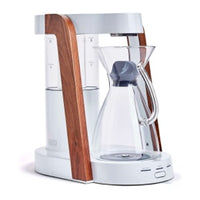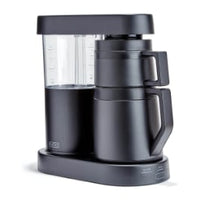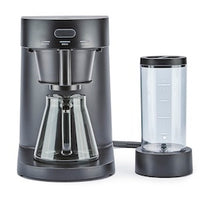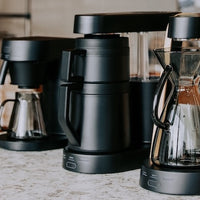The One Coffee Brewing Step That Shouldn’t Be Rushed
Key Takeaways
-
The bloom phase is critical for unlocking a coffee’s full aroma and flavor
-
Rushing this step can lead to under-extraction and a flat-tasting brew
-
Allowing time for degassing improves consistency and sweetness
-
Bloom time varies depending on roast level, freshness, and grind size
-
Applying patience here works with any brewing method, from pour-over to drip coffee machines
For many coffee lovers, brewing is a daily ritual. But in the rush of morning routines, it’s tempting to skip or shorten certain steps to get that cup faster. One step, however, deserves your full attention: the bloom. This brief but essential phase can determine whether your coffee tastes vibrant and complex—or dull and lifeless.
What Is the Bloom?
The bloom is the moment hot water first makes contact with coffee grounds, triggering the release of carbon dioxide trapped inside freshly roasted beans. This gas buildup occurs naturally during roasting, and its release is most visible in freshly ground coffee as a dome-like expansion at the surface.
When you pour water over the grounds and they bubble and swell, you’re witnessing the bloom in action. This step isn’t just visually satisfying—it sets the stage for even extraction.
Why the Bloom Matters
If you skip or rush the bloom, trapped carbon dioxide remains in the grounds, repelling water during brewing. This prevents full saturation, leading to:
-
Under-extraction: Resulting in sour or sharp flavors
-
Uneven flavor profile: Some grounds are over-extracted while others are barely touched
-
Loss of complexity: Aromatic compounds are muted or lost entirely
Giving the bloom its due time allows water to fully penetrate the grounds afterward, making extraction more balanced and flavorful.
How Long Should You Bloom?
The standard recommendation is 30 to 45 seconds, but the ideal time can vary based on:
-
Freshness of the beans: Fresher beans have more trapped gas and may need closer to 45 seconds
-
Roast level: Lighter roasts often need a longer bloom, while darker roasts release gas faster
-
Grind size: Finer grinds may bloom more quickly, while coarser grinds require a touch more time
Ultimately, watching the bloom tells you more than the clock—once the bubbling slows and the grounds settle, you’re ready for the main pour.
The Science Behind the Bloom
Coffee grounds are porous and contain countless microscopic pockets where carbon dioxide is trapped. When hot water hits them, the gas expands and escapes. If this happens during the main brew instead of in a dedicated bloom phase, water channels around the escaping gas, leaving some grounds under-saturated.
The bloom phase allows this degassing to happen up front, so when you begin your main pour, the water can evenly and fully interact with the coffee bed.
Blooming in Different Brewing Methods
-
Pour-over: This method benefits the most from a controlled bloom. Use just enough water to wet the grounds evenly, then wait before pouring the rest.
-
French press: Blooming before filling the press helps avoid uneven steeping and can enhance sweetness.
-
Drip coffee machine: While many machines skip a dedicated bloom, some models include a pre-infusion stage to mimic it. If yours doesn’t, manually pre-wet the grounds with a small amount of hot water before starting.
-
AeroPress: Adding a short bloom before pressing improves clarity and reduces sharpness.
Practical Tips for a Better Bloom
-
Use a gooseneck kettle for controlled pouring.
-
Weigh your coffee and water for consistent results.
-
Pour evenly over the grounds to avoid dry pockets.
-
Smell the bloom—the aroma can give clues about bean quality and roast.
-
Don’t rush—wait until bubbling slows before continuing.
Common Mistakes to Avoid
-
Over-blooming: Waiting too long can let the grounds cool, leading to lower extraction efficiency.
-
Uneven wetting: Pouring only in one spot creates uneven saturation.
-
Using stale beans: Older beans produce little to no bloom, signaling diminished freshness.
Patience Pays Off
The bloom is a perfect reminder that good coffee rewards patience. Those extra 30–45 seconds might feel like an eternity during a busy morning, but they can mean the difference between a flat cup and one bursting with layered flavors.
The Ratio Coffee Perspective
Precision and patience go hand in hand. While you can’t speed up the bloom without sacrificing flavor, using a high-quality coffee machine from Ratio Coffee ensures the other brewing variables—like temperature stability and even water distribution—are handled with care. That way, you can focus on giving the bloom its proper time.
Savoring the Wait
Think of the bloom as a moment to slow down. While the grounds release their fragrant gas, you can take a breath, enjoy the aroma, and anticipate the first sip. That small pause turns brewing from a rushed task into a mindful ritual.
When you finally take that first sip, you’ll taste the payoff of not cutting corners—a balanced, aromatic cup that feels worth every second.
Frequently Asked Questions
Does the bloom matter if I’m using pre-ground coffee?
Yes, but the effect will be less pronounced. Pre-ground coffee loses gas quickly, so blooming may produce minimal bubbling.
Can I bloom with cold water?
No—blooming requires hot water to release gas efficiently.
Is blooming more important with light or dark roasts?
Light roasts generally benefit more because they hold more gas and require longer extraction.
My drip machine doesn’t have a bloom setting. What can I do?
You can pre-wet the grounds with a small amount of hot water before starting the brew cycle.
Will skipping the bloom ruin my coffee?
Not necessarily, but it will likely make it less balanced and flavorful.
 Ratio Eight S2
Ratio Eight S2
 Ratio Eight Original
Ratio Eight Original
 Ratio Six
Ratio Six
 Ratio Four
Ratio Four
 Compare Machines
Compare Machines






